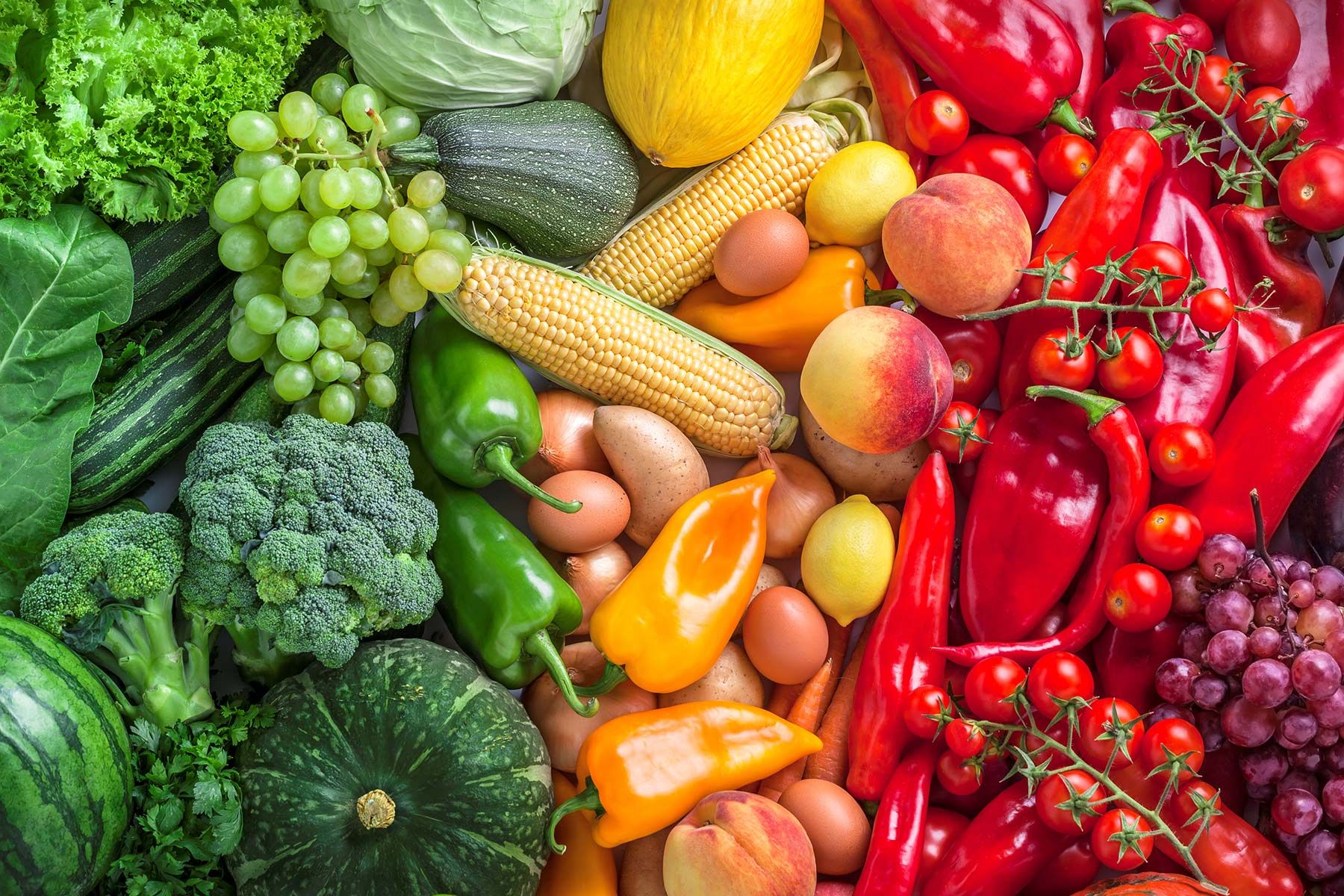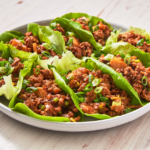Did you know that a colorful plate indicates a balanced meal? Yes, and many of those substances are phytonutrients. In this sense, the traditional concept of the daily diet has changed a lot over time and, today, apart from essential nutrients, it is essential to include these compounds. Despite all this, it is also important to consider that these substances are still under investigation.
Now, you may be wondering, why are phytonutrients in the diet so important? Because these substances help prevent diseases and many of them also perform essential functions in our body. Therefore, if you did not know these compounds or want to know them better, then we will tell you everything essential about this topic, including some of its disadvantages.
What are phytonutrients?
Photochemistry is the scientific discipline that is responsible for the isolation, analysis and study of the biological activity of various substances produced by plants. Therefore, when we talk about phytochemicals or phytonutrients, in its strictest sense, it is understood as the chemical products produced by plants. However, this term is commonly used in a narrower and more specific sense, being used only to describe chemical products of plant origin that affect health in a beneficial way, although, in reality, it should also cover the less favorable aspects of these components, as well as how they affect plants.
In the plant world, phytochemicals are substances that fulfill several vital functions: they favor the development of plants, provide their organoleptic characteristics, favor ecological interactions, contribute to pollination and, as if that were not enough, help to protect plants against their competitors. (Both pathogens and predators), among other benefits.
When it comes to the human diet, phytonutrients, although they do not contain nutritional or energy value, generally keep the body healthy. In this sense, phytonutrients do not qualify as macronutrients (essential nutrients) or as micronutrients (vitamins and minerals); however, despite the latter, some phytonutrients act as provitamins. Finally, it is interesting to note that phytonutrients or phytochemicals are also known as bioactive substances or components, functional foods, pharmaceutical foods, photofloods, smart foods, therapeutic foods, value-added foods, genomic foods, prebiotic/probiotic foods or phytochemical sources, among others. Other terms.
Tip: the element ‘photo’ means ‘plant’.
Types of Phytonutrients
There are two ways to classify phytonutrients, one more empirical and the other more scientific. The first uses color and the second takes chemical components directly into account. Starting from here, if we are guided by the colors of foods of plant origin, the classification of phytochemicals would be as follows:
- Red: lycopene.
- Orange: beta carotene.
- Green: carotenes and sulfuraphanes.
- Yellow: lutein and zeaxanthin.
- Purple: flavonoids.
- Blue: anthocyanin’s.
- White: organ sulfides.
Now, if we group functional foods by their chemical compounds, the summary classification of the types of phytonutrients would be as follows:
- Phenols. Phenols are organic compounds that contain hydroxyl as their most representative compound and are usually present in natural waters, being the product of environmental pollution and/or organic matter decomposition processes. The weak acidity of the phenolic group chemically groups it with carboxylic acids and tannins, thus forming the group of organic acids. Phenols, in turn, are divided into three subgroups: flavonoids (anthocyanin’s), phenolic acids, and non-flavonoid polyphenols.
- Terrenes. These elements are volatile compounds that become part of atmospheric gases, but they can also accumulate inside plants in order to protect them from the elements that surround them. The complexity of its benefits for humans is still under investigation. Terrenes are divided into two subcategories: carotenoids and xanthophyll. Some carotenoids are lycopene, beta-carotene, lutein, and zeaxanthin. It is interesting to mention that carotenoids need to be ingested because the body is not capable of producing them.
- Thiel’s. They can be described as sulfur-containing analogous organic compounds of alcohols, that is, instead of having the typical hydroxyl group of an alcohol, the oxygen of this contains the sulfur atom. The Thiel subgroup is grouped into three: organ sulfides, glucosinalates (including sulfuraphane and isocyanides), and insoles.
- Tocopherols. Natural compounds that perform the function of vitamin E are called tocopherol. In this sense, tocopherol is an antioxidant that acts on cell membranes against deterioration caused by the release of free radicals, which contain oxygen.
Although here we refer only to plant-based phytochemicals, there are also animal-based phytochemicals.
What are phytonutrients for: benefits and drawbacks?
Although much is said about the benefits of phytonutrients or phytochemicals, the full extent of their properties and, of course, their disadvantages are still unknown. Therefore, before talking about the benefits of bioactive foods, it is interesting to consider them in their broadest sense that is, taking into account substances such as phytotoxins and ant nutrients, plus their effects on our body. And although these two substances do not sound very beneficial, they have both positive and negative aspects.
Ant nutrients are simply phytonutrients that if consumed in excess or inappropriately can interfere with the absorption or activity of one or more nutrients. However, this effect can be neutralized or minimized by performing certain procedures during food preparation. Some ant nutrients are sapiens (present in legumes), phytates (contained in the fiber of whole grains), tannins (dried legumes, coffee, etc.) and oxalates (beets, green leaves, legumes, etc.), among others.
On the other hand, if we talk about phytotoxins, we refer to natural substances that protect plants from predators, although this term also usually refers to herbicide products. Some natural phytotoxins, although toxic in principle, may be useful to humans, but only after being synthesized in a laboratory. Some examples of useful phytotoxins for humans are silicon extracted from white willow bark, which is used to produce aspirin, or paclitaxel extracted from English yew, used for a valuable anticancer drug.
Now, having clarified these points, we can explore the benefits of the main subgroups of phytonutrients:
- Carotenes and sulfuraphanes (green color). They strengthen the immune system and promote cancer prevention. In general, carotenoids are a family of antioxidants with many benefits for the body.
- Lycopene (red color). It takes care of the circulatory system and prevents prostate cancer.
- Beta carotene. They protect the skin, slow skin aging, have antioxidant action and promote mental health.
- Lutein and zeaxanthin (yellow color). They take care of the view in general, prevent cataracts, protect the skin and fulfill an antioxidant function.
- Organ sulfides (white color). They control cholesterol, reduce the risk of cancer, improve blood circulation, prevent infections and improve the immune system.
- Flavonoids (purple, red, bluish-red and yellow). They prevent cardiovascular diseases, have anti-inflammatory and analgesic action, improve blood circulation and help prevent cancer. However, the excess of these substances could have pro-oxidant effects and cause cancer, according to some studies.
- Anthocyanin’s (blue, red and blue color). They help prevent urinary tract infections, have antioxidant action, stimulate the brain and slow down aging.
Examples of foods with phytonutrients
Now, you may be wondering, what are the foods with phytonutrients? Before answering that question, it’s important to talk a bit about provitamins. The best known phytochemicals in the daily diet are the provitamins or previtamins. These substances present in most foods become vitamins only when they come into contact with our body, as they are activated there. Therefore, it is essential to maintain a balanced diet to obtain not only essential nutrients, but also these phytonutrients. Also, as we mentioned before, there are phytonutrients that do not contain provitamins, as is the case with some antioxidants. That said; let’s look at some examples of the main phytonutrients found in food:
- Carotenes (pigment and antioxidant): carrots, turnip tops, curly cabbage, watercress, spinach, red pepper, Swiss chard, apricot, tomato, lettuce, orange, etc.
- Beta carotene (provitamin A): orange, carrot, pumpkin, etc.
- Lutein and zeaxanthin (antioxidants). Lutein is found in various grains, vegetables and fruits: turnip greens, asparagus, celery, chard, Brussels sprouts, pumpkin, wheat seeds, corn, sucking, broccoli, romaine lettuce, spinach, kale, mango, papaya, orange, melon, pears, prunes, etc. For its part, zeaxanthin is another yellow compound, almost identical to lutein, generated by plants when absorbing light. This substance is found in certain cereals, vegetables and fruits, yellow or orange, such as: corn grain, mango, orange, papaya, pumpkin, watercress, chicory, etc.
- Lycopene (antioxidant): cranberry, tomato, pink grapefruit, red bell pepper, watermelon, pomegranate, red cabbage, guava, etc.
- Flavonoids (antioxidants). It is found in fruits (including citrus fruits), vegetables and spices, such as: grapes, blackberries, apples, strawberries, plums, cocoa, tea, leeks, onions, aromatic herbs, etc. Wines also provide this type of phytonutrient.
- Anthocyanin’s (water-soluble pigment and antioxidant). These substances belong to the flavonoid family and can be found in blueberries, blackberries, grapes, colored potatoes, radishes, etc.
- Organ sulfides (antibiotic and antioxidant properties): garlic, onion, cauliflower, turnip, mushrooms, etc.
- Sulfuraphanes (antioxidants). These substances are found in the family of cruciferous vegetables: broccoli, spinach, cabbage (especially purple), Swiss chard, watercress, lettuce, among others.
Finally, it is interesting to mention that phytonutrients are absorbed during the body’s own processes, such as chewing or hydrolysis in the stomach, as well as during food preparation.



